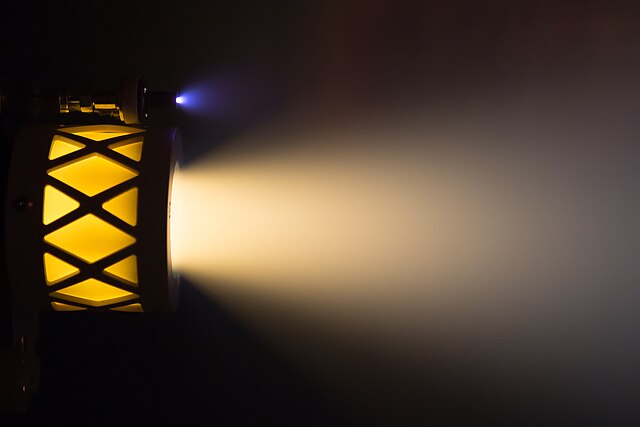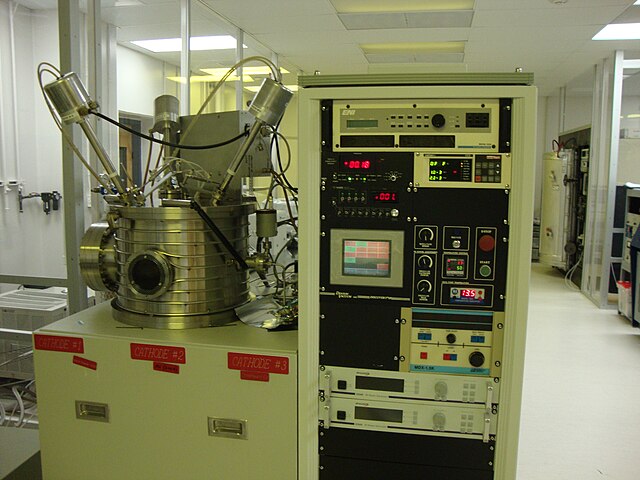In physics, sputtering is a phenomenon in which microscopic particles of a solid material are ejected from its surface, after the material is itself bombarded by energetic particles of a plasma or gas. It occurs naturally in outer space, and can be an unwelcome source of wear in precision components. However, the fact that it can be made to act on extremely fine layers of material is utilised in science and industry—there, it is used to perform precise etching, carry out analytical techniques, and deposit thin film layers in the manufacture of optical coatings, semiconductor devices and nanotechnology products. It is a physical vapor deposition technique.
A commercial AJA Orion sputtering system at Cornell NanoScale Science and Technology Facility
Ion thruster operating on iodine (yellow) using a xenon (blue) hollow cathode. High-energy ions emitted from plasma thrusters sputter material off the surrounding test chamber, causing problems for ground testing of high-power thrusters.
A commercial sputtering system
Reactive-ion etching (RIE) is an etching technology used in microfabrication. RIE is a type of dry etching which has different characteristics than wet etching. RIE uses chemically reactive plasma to remove material deposited on wafers. The plasma is generated under low pressure (vacuum) by an electromagnetic field. High-energy ions from the plasma attack the wafer surface and react with it.
A commercial reactive-ion etching setup in a cleanroom




